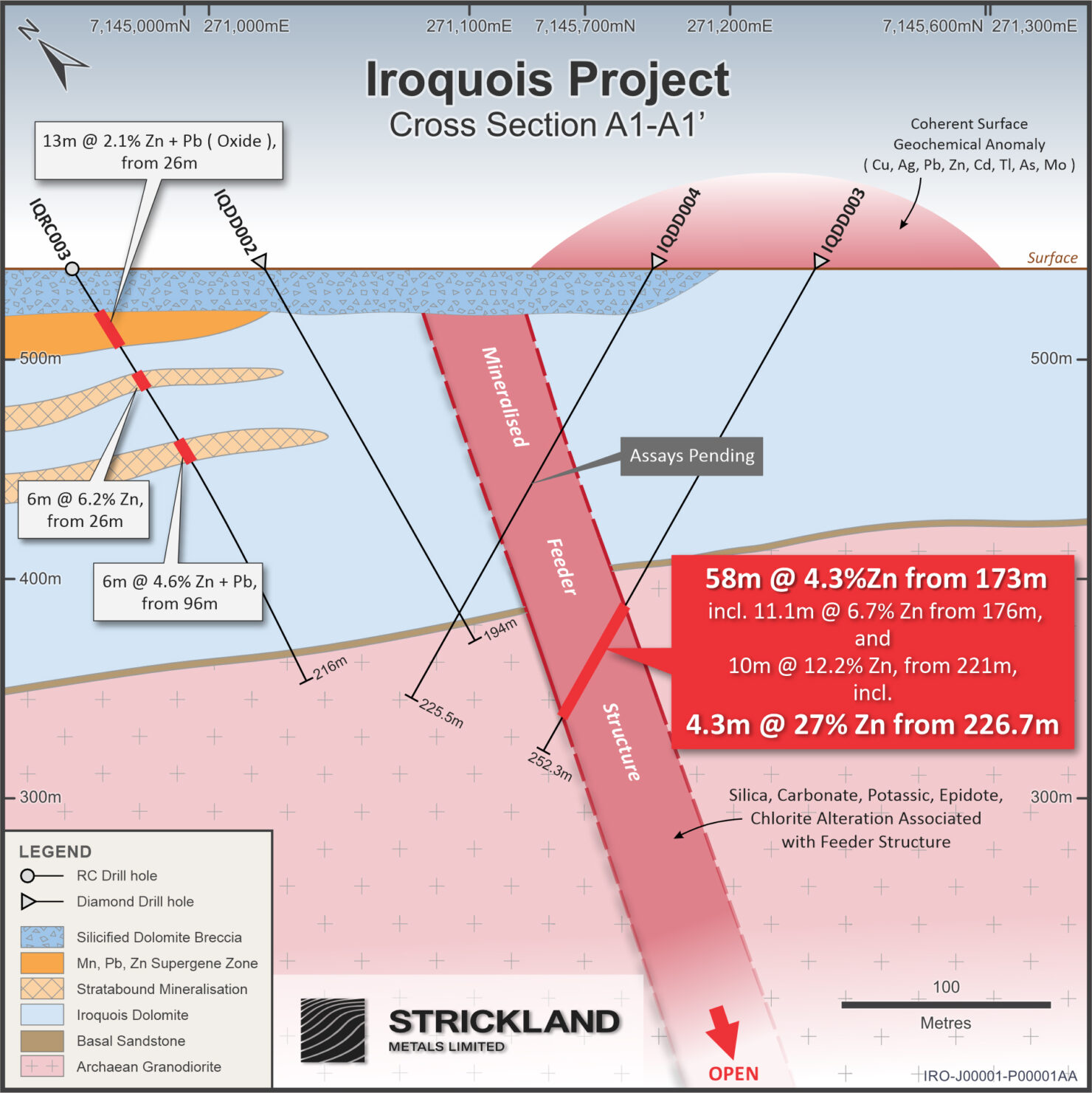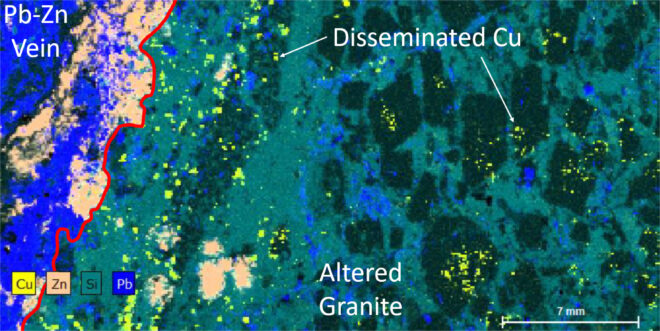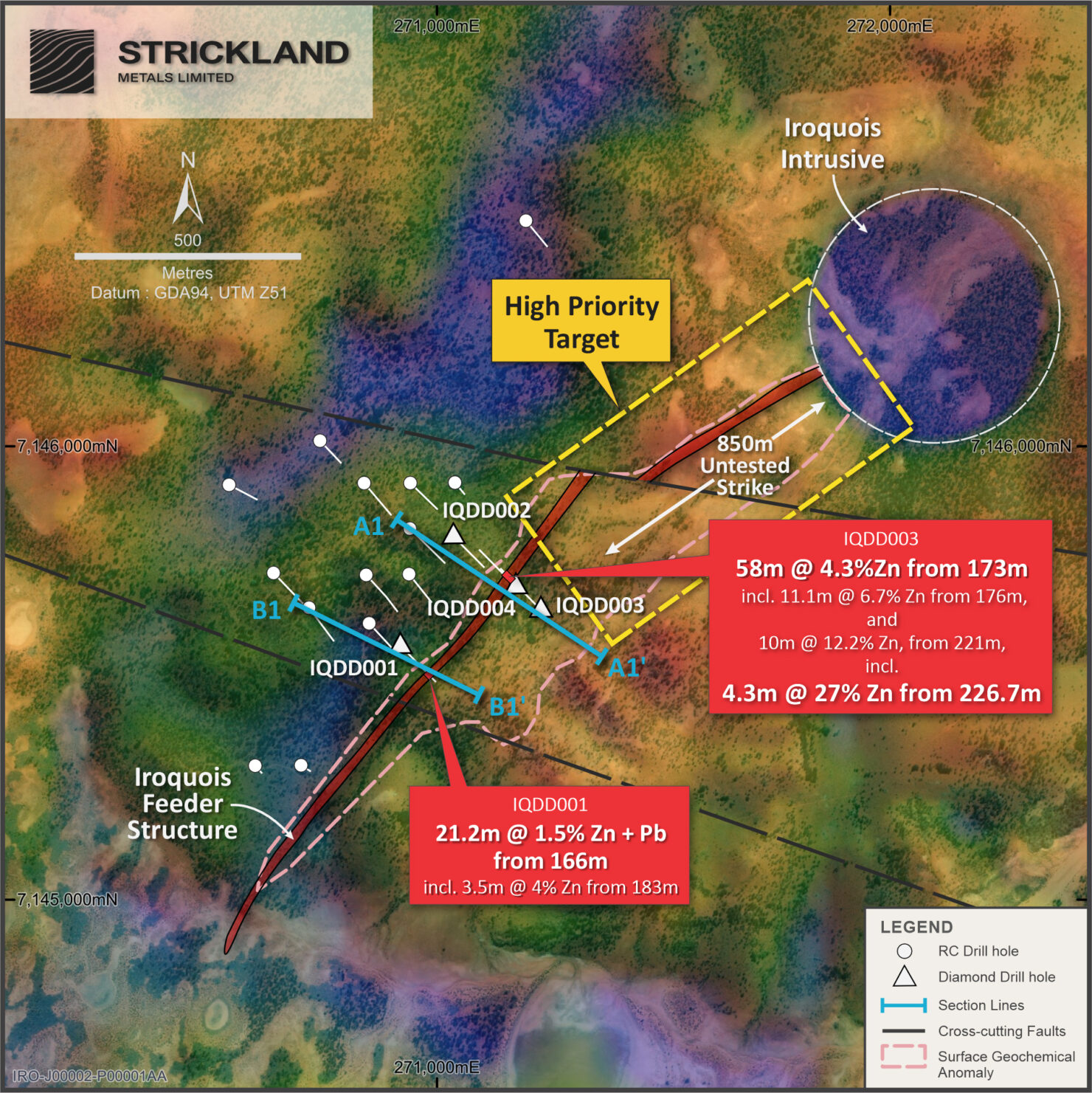Projects / Iroquois Project
The Iroquois Project (80% Strickland; 20% Gibb River Diamonds Ltd (ASX:GIB)) is located directly along strike from Rumble Resources Limited’s (ASX : RTR) Earaheedy Project Chinook zinc-lead discovery.
Both discoveries suggest the Earaheedy Basin margin is emerging as a significant new mineralised province and is highly prospective for further zinc-lead discoveries. Strickland controls approximately 30 kilometres of strike extending from the Rumble Resources Earaheedy Project.
Location
Earaheedy Basin, Western Australia
Minerals
- Base Metals

Figure 1: Project location compared to RTR’s Chinook discovery
Iroquois Discovery
An initial reverse circulation (RC) drilling program by Strickland in 2021 highlighted broad zones of mineralisation in the fresh rock below the previously identified oxide zone, containing both a Zn-rich upper zone and a Zn + Pb rich lower zone:
- IQRC001: 23m @ 5.5% Zn + Pb from 108m (combined), including;
- 14m @ 4.5% Zn from 108m (true depth 90m) and 9m @ 7% Zn + Pb from 135m (true depth 110m)
- IQRC003: 12m @ 5.4% Zn + Pb from 58m (combined), including;
- 6m @ 6.2% Zn from 58m (true depth 50m) and 6m @ 4.6% Zn + Pb from 96m (true depth 80m)
- IQRC010: 8m @ 5.2% Zn from 95m and 5m @ 10.1% Zn + Pb from 110m (within a broader zone of 18m @ 4.2% Zn + Pb).
In addition, lower grade Zn + Pb mineralisation has been identified within the oxide zone, including:
- IQRC001: 5m @ 2.9% Zn + Pb from 23m; and 22m @ 2.2% Zn + Pb from 37m
- IQRC003: 13m @ 2.1% Zn + Pb from 24m
Drill holes IQRC001 and IQRC003 are located approximately 300m apart. Importantly, this the first drilling to have tested for fresh-rock hosted mineralisation in the area. Historic drilling has only targeted a shallow oxide manganese-rich zone.
Following acquisition of gravity and induced polarisation (IP) data across the Iroquois Project, a diamond drilling program by Strickland in 2023 successfully intercepted the interpreted 'feeder' fault structure:
- IQDD003: 58m @ 4.3% Zn & 3.7g/t Ag from 173m, including;
- 11.1m @ 6.7% Zn & 7.4g/t Ag from 176m and 4.3m @ 27.0% Zn, 0.1% Pb & 19.9g/t Ag from 226.7m.

Figure 2: Cross section through the Iroquois Project
Strickland has discovered multiple styles of mineralisation at the Iroquois Project which have not been discovered across the Earaheedy Basin to date:
- Early stratabound low temperature MVT-style Zn-Pb mineralisation
- Overprinting high-temperature carbonate-replacement (CRD) and skarn polymetallic mineralisation in surrounding 'feeder' structures

Figure 3: MVT-style mineralisation consists of relatively coarse grained sphalerite +/- galena mineralisation, hosted within the Iroquois dolomite unit. Proximal to the mineralisation is an alteration zone consisting of pyrite, manganese and minor sericite.

Figure 4: Micro XRF analysis of core from IQDD001 showing overprinting disseminated Cu related to high-temperature skarn-style mineralisation, and massive sulphides in the Feeder Structure.

Figure 5: Plan view of the Iroquois Feeder Structure in relation to the existing drill holes and the Iroquois Intrusion.
Drilling to date indicates strong continuity of both MVT-style and CRD/skarn mineralisation, highlighting a substantial mineralised zone which requires further drilling along strike.
The shallow nature of the mineralisation intersected to date indicates it could potentially be amenable to open cut mining scenarios.